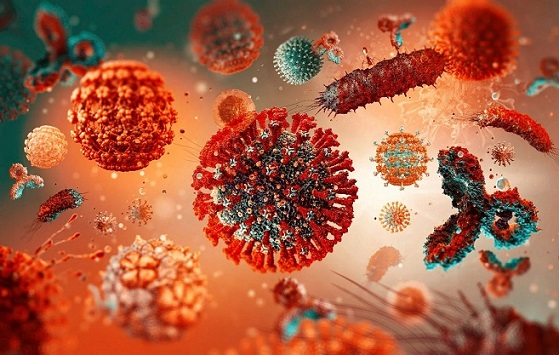Nikhil Prasad Fact checked by:Thailand Medical News Team Oct 09, 2025 2 months, 2 weeks, 1 day, 9 hours ago
Medical News: A Hidden Link Between SARS-CoV-2 and HIV Reactivation
In a groundbreaking discovery, researchers in Beijing have uncovered that the spike protein of SARS-CoV-2—the same one used in mRNA vaccines—can activate dormant HIV in patients undergoing antiretroviral therapy. The findings highlight how the spike protein stimulates the mTOR signaling pathway, a key cellular regulator that can awaken the latent HIV reservoir long considered one of the greatest obstacles in curing HIV/AIDS. This
Medical News report explores the implications of these findings, which raise questions about how COVID-19 infection or repeated exposure to spike protein might influence HIV persistence.
 COVID-19 Spike Protein Found to Awaken Dormant HIV via the mTOR Pathway
COVID-19 Spike Protein Found to Awaken Dormant HIV via the mTOR Pathway
The study was conducted by scientists from the Beijing Key Laboratory for Research on Liver Regeneration and Artificial Liver Transformation at Beijing Youan Hospital, Capital Medical University, China.
How the Study Was Conducted
Using advanced cell models known as J-Lat 10.6 cells, which mimic the hidden HIV reservoirs in the body, the researchers introduced the SARS-CoV-2 spike protein into cells to monitor viral activation. They observed that spike protein exposure alone increased the activation of latent HIV genes and boosted production of viral proteins such as p24—markers of HIV replication.
mTOR Pathway Plays the Central Role
The study revealed that the spike protein binds directly to the mTOR molecule, stimulating its downstream pathways (notably pS6 and p70S6K). When researchers added rapamycin, an mTOR inhibitor, this reactivation effect was significantly reduced, confirming that the mTOR pathway acts as the main switch. Interestingly, when leucine, an amino acid that activates mTOR, was reintroduced, the dormant virus became active again, proving that the effect could be reversed by reactivating mTOR.
Real Patient Samples Showed the Same Pattern
To ensure these results were not limited to laboratory conditions, the scientists tested blood cells from HIV patients receiving antiretroviral therapy. After exposure to the spike protein, these patient-derived cells began showing heightened HIV activity, indicating that even controlled HIV infection could be transiently reawakened by spike-mediated mTOR stimulation. Although the effect was not large enough to cause immediate viral rebound, it underscores a potential mechanism of immune interference between SARS-CoV-2 exposure and chronic HIV infection.
Implications for COVID-19 and HIV Patients
The discovery sheds new light on why some HIV-positive individuals experience small but temporary spikes in viral load following COVID-19 infection or vaccination. While these changes are not dangerous for those on effective ART, they do indicate that spike-induced metabolic and immune signaling might subtly affect viral latency. This could be important in managing co-infected patients and in designing vaccines or therapies th
at avoid overstimulating pathways like mTOR.
A Step Toward Understanding Viral Crosstalk
By demonstrating how the SARS-CoV-2 spike protein directly interacts with cellular mechanisms that control HIV dormancy, the study provides a foundation for future work on therapeutic strategies. It also opens the door to research on how viral proteins can alter other latent infections within the body.
The study findings were published on a preprint server and are currently being peer reviewed.
https://www.researchsquare.com/article/rs-7669683/v1
For the latest COVID-19 News, keep on logging to Thailand
Medical News.
Read Also:
https://www.thailandmedical.news/news/japanese-case-study-highlights-that-sars-cov-2-can-remain-dormant-in-humans-and-be-reactivated-following-allo-hsct
https://www.thailandmedical.news/news/can-sars-cov-2-reactivate-dormant-measles-virus
https://www.thailandmedical.news/news/breaking-turkey-medical-researchers-based-on-actual-clinical-case-reports-warn-that-covid-19-is-reactivating-dormant-tuberculosis-in-individuals-inclu
